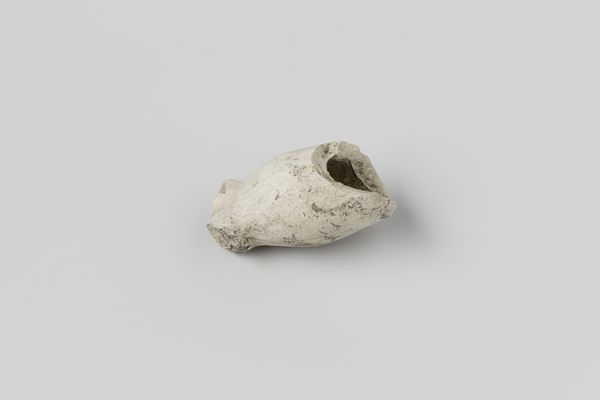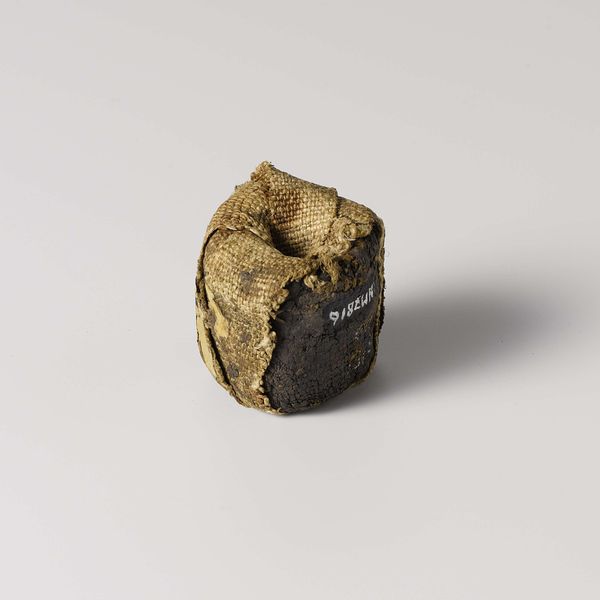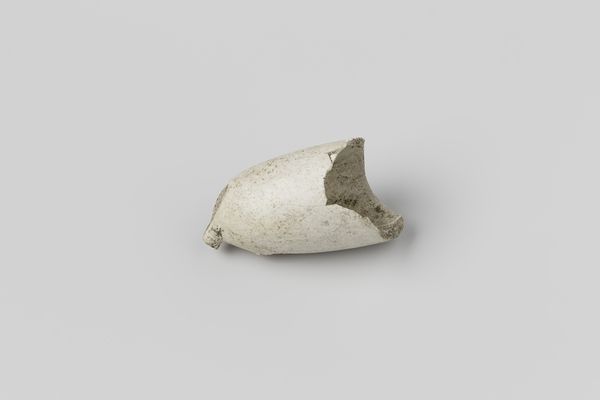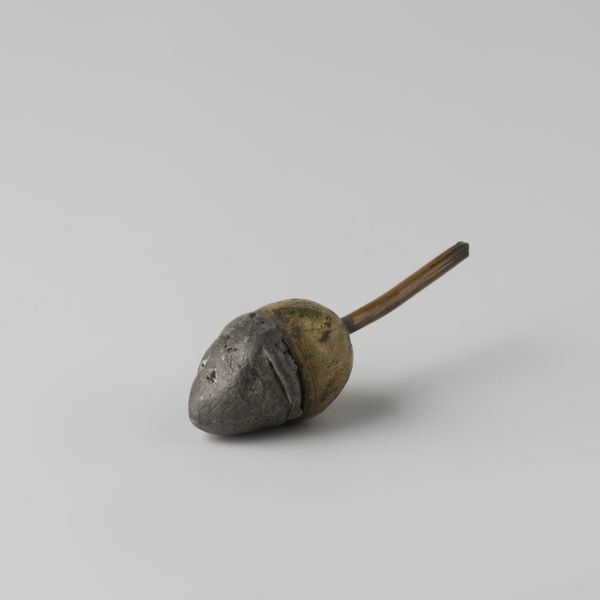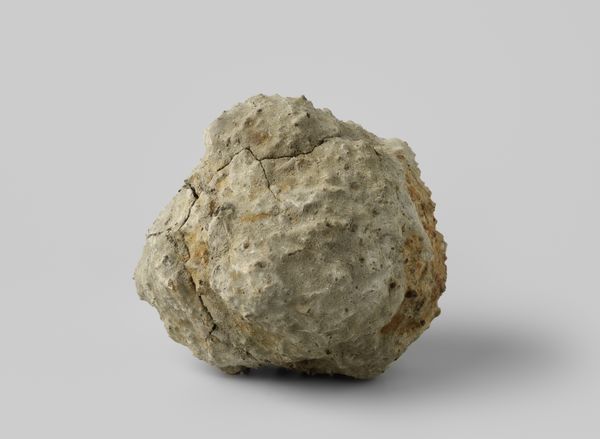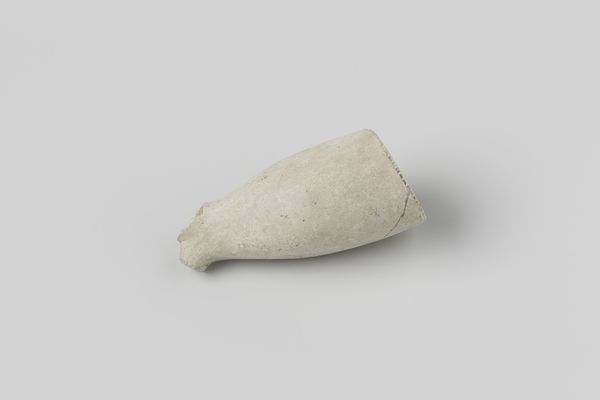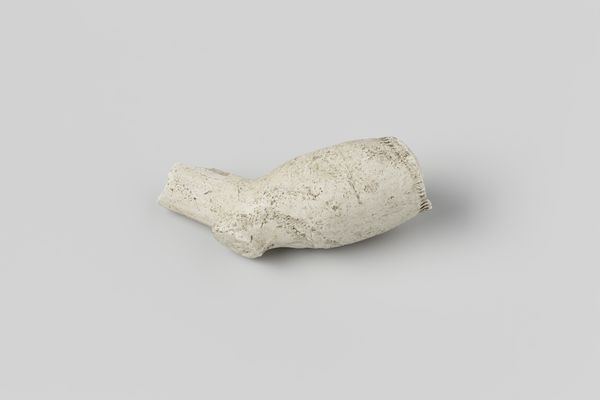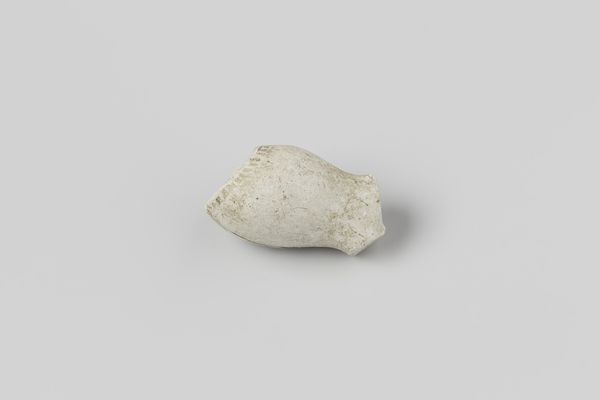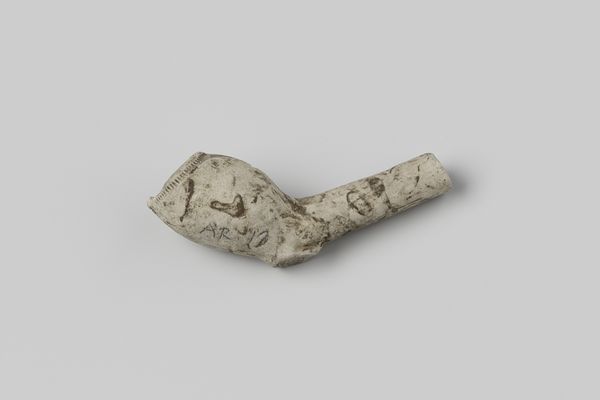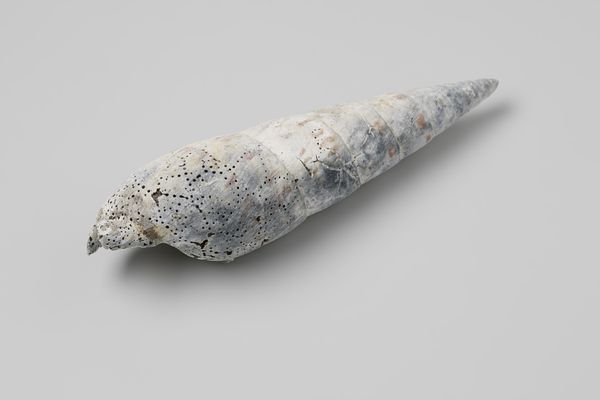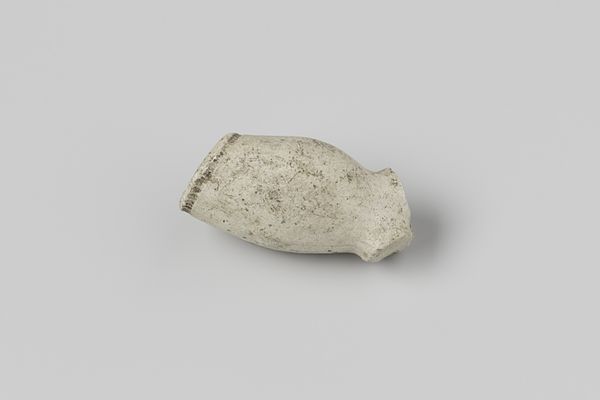
metal, found-object, sculpture
#
metal
#
found-object
#
ancient-mediterranean
#
sculpture
Dimensions: height 13.7 cm, width 36 cm, depth 20 cm
Copyright: Rijks Museum: Open Domain
Editor: This is an arresting fragment, recovered from the V.O.C. ship ‘Witte Leeuw,’ which sank before 1613. The label indicates that the material is a combination of metal and what's classified as a "found object." The rough, almost petrified texture against the stark white point creates a powerful contrast. What is your take on the piece? Curator: The “Witte Leeuw” was lost amidst rising tensions between the Dutch and Portuguese, hinting at a global struggle for trade dominance. So this fragment transcends being just an artifact. Its display reflects our shifting understanding of colonial history, turning it from a symbol of Dutch power into a tangible record of early globalization's costs and complexities. What do you make of that transformation? Editor: That makes a lot of sense. It's easy to romanticize maritime exploration, but seeing it in this context really pushes you to consider the darker aspects. It's interesting that an object that likely had a practical use is now displayed as a symbol laden with historic importance. Curator: Indeed. This highlights the museum’s role, not as a neutral space, but as an active participant in shaping narratives. By isolating this fragment and presenting it in a sterile environment, aren't we, as curators, also contributing to its layered history? How does its present framing influence its perceived significance? Editor: Wow, that really opens up my understanding of not just this piece, but museum displays in general. I see that context is always evolving. Thanks so much! Curator: The pleasure was mine. It's crucial to remember that history is never a closed book.
Comments
No comments
Be the first to comment and join the conversation on the ultimate creative platform.
